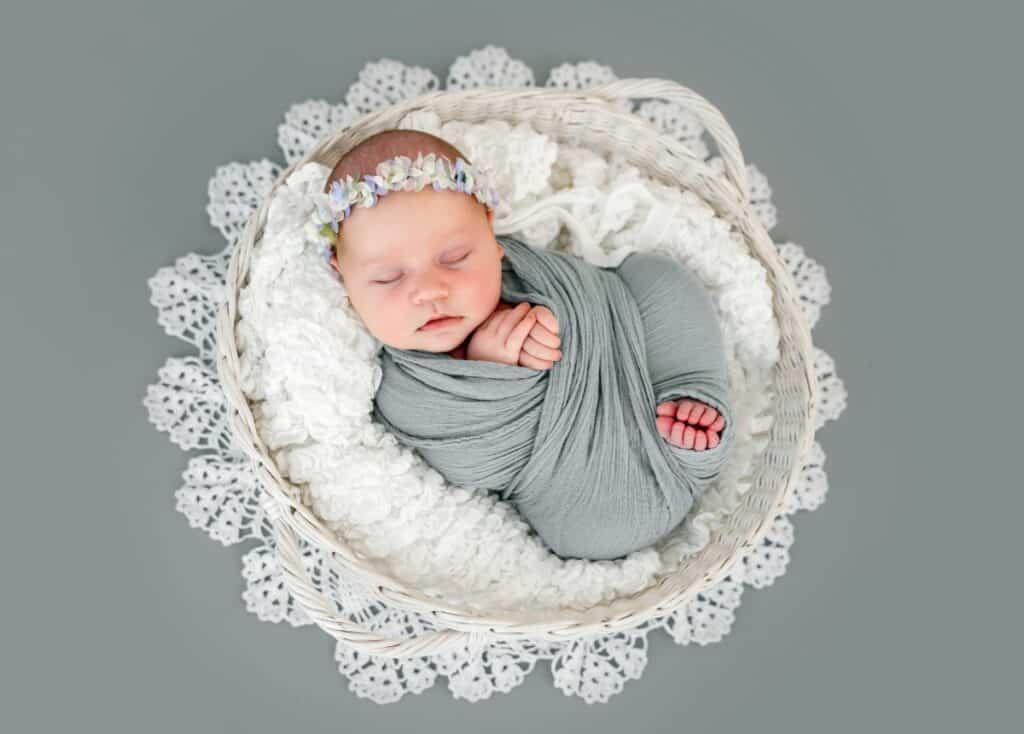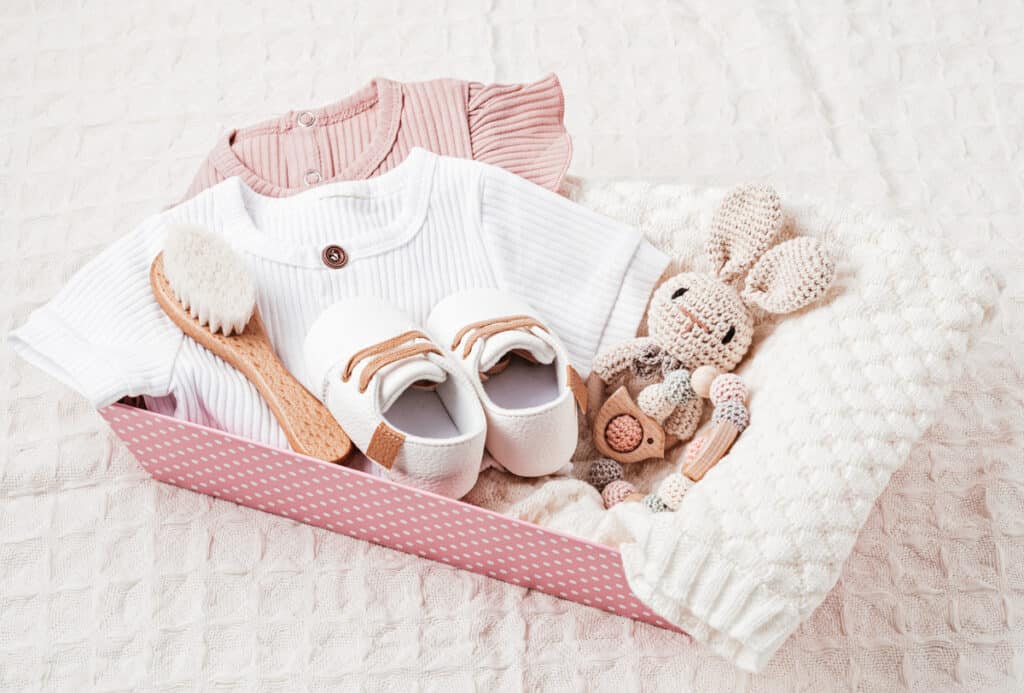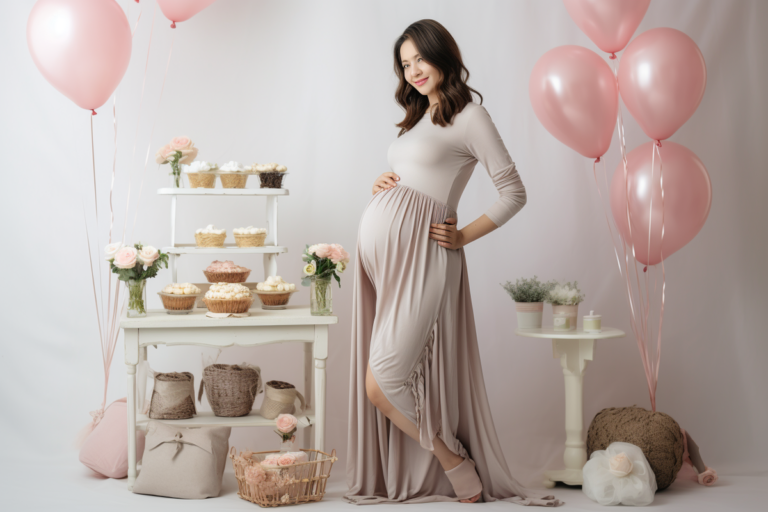Newborn photography is a beautiful art form that captures the first few days or weeks of your baby’s life. These images are not just photographs; they are priceless memories that tell the story of your little one’s early days. Newborn photography provides a unique way to cherish the fleeting moments of newborn innocence and the tiny details that change so quickly.
Newborn photography is truly special. The images taken during this time become treasured keepsakes, reminders of your little one’s first few days or weeks in this world. These photos hold a unique place in your heart, serving as timeless mementos that you and your family can look back on for years to come.
In this newborn photography guide, We’ll delve into the best time for scheduling a session, how to prepare for it, what safety measures you should consider, and how to choose the right photographer.
In This Article
- Best Time for Newborn Photography
- How to Prepare for Your Baby Photo Session
- Safety First: Ensuring a Safe Newborn Photo Pose
- The Process of a Newborn Photography Session
- A Handy Checklist for Your Newborn Photo Session
- How to Choose Right Newborn Photographer
- Tips for a Successful Newborn Photography Session
Best Time for Newborn Photography
Newborn photography is a delicate art that requires perfect timing to capture those precious first moments. The ideal age for a newborn photography session can vary, but there are some general guidelines that most professionals agree on.
The widely accepted time frame within the photography industry is during the baby’s first two weeks of life. This is when babies tend to sleep most of the time, making it easier to pose them and capture those dreamy, peaceful images.
However, if you’ve missed this two-week window, don’t worry. Some photographers recommend waiting until around 5 weeks to schedule your baby’s newborn photos. At this stage, babies start to develop their own little personalities, and you’ll be able to capture a different kind of beauty in your photos.
Another option is to wait until your baby is 6-8 months old, especially if you decide to forego newborn pics2. At this age, babies are generally a little chunkier and can sit independently, which opens up a new range of adorable photo opportunities.
It’s worth noting that timing can also depend on what you want from the session. If you’re looking to capture your baby’s first smiles, the age of 12-16 weeks could be ideal.

How to Prepare for Your Baby Photo Session
A newborn photo session can be a delightful experience, but it does require some preparation. Here’s how you can get your baby and yourself ready for the big day.
To prepare your baby, try to keep them awake for about an hour before the session. This might involve a little playtime or a bath. The goal is to have your baby nice and sleepy for the shoot. Remember, most newborn photos feature sleeping babies because they’re easier to pose when they’re snoozing away.
Feeding your baby right before the photoshoot can also help make them sleepy and content. Consider packing extra bottles if you’re not breastfeeding, or even if you are, as the new environment might make your baby more hungry than usual.
When it comes to what parents should bring to the session, the first item on the list should be diapers, and lots of them. You never know when you’ll need a fresh one. Also, bring wipes for any unexpected messes during those adorable naked baby shots.
If you plan to incorporate any personal items into the photos, such as a special blanket or a family heirloom, remember to pack those. Some parents like to include items related to their interests or hobbies, which can add a personal touch to the photos.
Don’t forget to bring a change of clothes for yourself, too. Newborn photography can sometimes be a messy business, especially with those cute naked baby shots. It’s always a good idea to have a backup outfit on hand.
Safety First: Ensuring a Safe Newborn Photo Pose

Safety is a top priority in newborn photography. The photographer or an assistant should always be near the baby, especially when they’re posed on props. One of the fundamental safety measures in newborn photography is never leaving the baby unattended, especially when they’re on a prop or in a pose. The photographer or an assistant should always have a hand on or near the baby to prevent any accidents.
Another important measure is to avoid poses that could put pressure on the baby’s neck or spine. A professional, experienced newborn photographer will know which poses are safe and comfortable for your baby. They should also use props that are sturdy, clean, and free from sharp edges.
Temperature control is also crucial. Babies can’t regulate their body temperature as adults do, so the room should be warm enough, especially if the baby is undressed for some shots. However, it shouldn’t be too hot as it could lead to overheating.
Now, what questions should you ask regarding safety? Firstly, ask the photographer about their experience with newborn photography. How many newborn sessions have they done? Have they received specific training in newborn safety?
You can also ask if they have an assistant present during the shoot. An extra pair of hands can be invaluable in ensuring the baby’s safety during posing.
The Process of a Newborn Photography Session

A newborn photography session is a unique and beautiful experience. If you’re not sure what to expect, here’s a rundown of the typical process and some common practices in this specialized field.
The session often begins with a pre-shoot consultation, either in person or over the phone. This is where you can discuss your expectations, preferences, and any specific poses or props you’d like to incorporate. The photographer will also provide guidance on how to prepare for the session.
On the day of the shoot, you’ll arrive at the studio or the agreed location with your baby and all necessary supplies. The photographer will have the studio warm and cozy to ensure your baby is comfortable, especially during those adorable naked shots.
Newborn sessions can last anywhere from 2 to 4 hours, largely because they are dictated by the baby’s needs and mood. A significant portion of the time is spent feeding, soothing, and cuddling the baby to make them comfortable and sleepy.
Photographers typically start with the simplest poses, gradually moving to more complex ones as the baby gets comfortable. Some common practices involve wrapping the baby in soft blankets, placing them in cute props, or posing them with family members.
A Handy Checklist for Your Newborn Photo Session

Preparing for a newborn photo session can be a bit overwhelming, especially for first-time parents. Here’s a handy checklist to help you get organized and ensure a smooth, successful photoshoot.
Essential Items to Bring:
- Diapers and Wipes: Pack more than you think you’ll need. These will come in handy for any unexpected messes during the shoot.
- Feeding Supplies: Whether you’re breastfeeding or bottle-feeding, bring all necessary supplies. The baby may need to feed more often in a new environment.
- Extra Clothes: For both the baby and you. Newborn photography can sometimes be a messy business!
- Baby Comfort Items: This could include a favorite blanket, pacifier, or stuffed animal. These items can help soothe the baby during the session.
- Personal Props: If you want to include any special items in the photos, like a family heirloom or themed props, remember to bring them along.
Pre-Session Preparations:
- Schedule Ahead: Try to book your newborn session within the first two weeks after birth. This is when babies are most sleepy and flexible, which helps with posing.
- Feed Your Baby: Aim to feed your baby about 20-30 minutes before the session starts. A full baby is typically a happy, sleepy baby.
- Keep Baby Awake: Before the session, try to keep your baby awake for an extended period. This will make them more likely to sleep during the shoot.
- Loosen Baby’s Clothing: Loosen your baby’s diaper and clothing about 30 minutes before the session. This helps avoid any lines or marks on the skin.
- Communicate with Photographer: Discuss your expectations, preferences, and any specific poses or themes you’d like. The more the photographer knows, the better they can meet your expectations.
How to Choose Right Newborn Photographer

Selecting the right newborn photographer is a crucial decision. Your baby’s first professional photos are keepsakes you’ll cherish forever. Here are some factors to consider and why establishing rapport and trust with your photographer is essential.
Factors to Consider:
- Style: Photographers often specialize in different styles, such as posed studio sessions, lifestyle sessions, or documentary-style shoots. Browse their portfolio to see if their style resonates with you.
- Experience and Training: Newborn photography requires specific skills and experience. Ask about their training, especially in newborn safety. An experienced newborn photographer will know how to pose your baby safely and comfortably.
- Pricing: This can vary widely among photographers. Make sure you understand what’s included in the package, such as the number of edited images, prints, or albums. It’s important to find a balance between quality and budget.
- Reviews and Recommendations: Look for reviews online or ask for recommendations from friends or family. This can give you an idea of others’ experiences with the photographer.
The Importance of Rapport and Trust:
Establishing a good rapport with your newborn photographer is vital. You’re entrusting them with your precious little one, so it’s important to feel comfortable and confident in their abilities.
During your initial consultation, assess how they communicate. Do they listen to your ideas and concerns? Do they provide clear guidance on what to expect during the session? Good communication is key to building trust and ensuring a smooth photoshoot.
Also, observe how they interact with your baby during the session. They should handle your newborn with care and patience. If at any point you feel uncomfortable with how the photographer is handling or posing your baby, don’t hesitate to speak up.
Choosing the right newborn photographer may take some time and research, but it’s worth the effort. Remember, these photos will capture one of the most magical moments in your life – the arrival of your new baby.
Tips for a Successful Newborn Photography Session
A newborn photography session can be a beautiful experience, capturing the precious early moments of your baby’s life. Here are some advice from professionals and tips on how parents can contribute to the success of the session.
Advice from Professionals for a Smooth Session:
- Timing is Key: The best time to photograph newborns is within the first two weeks after birth when they are most sleepy and flexible.
- Keep the Baby Warm: Babies are sensitive to temperature changes. Keeping the baby warm can help ensure their comfort during the session.
- Be Prepared: Have all the necessary props, outfits, and equipment ready before the session starts.
- Let the Baby Inspire You: Each baby is unique. Let their personality and mood guide the flow of the session.
- Mind Your Aperture: When taking close-up shots, use a larger aperture to blur out the background and focus on the baby’s features.
How Parents Can Contribute to the Success of the Session:
- Feed the Baby: A full baby is typically a happy, sleepy baby. Aim to feed your baby about 20-30 minutes before the session starts.
- Loosen the Baby’s Clothing: Loosen your baby’s diaper and clothing about 30 minutes before the session. This helps avoid any lines or marks on the skin.
- Bring Comfort Items: If the baby has a favorite blanket, stuffed animal, or pacifier, bring it along. These can help soothe the baby during the session.
- Communicate Openly: Discuss your expectations and preferences with the photographer. Good communication ensures a smooth session and photos that you’ll love.
Conclusion
Preparing for a newborn photography session can feel daunting, but with the right guidance and preparations, it can be a smooth and enjoyable experience. Remember to bring essential items such as diapers, wipes, feeding supplies, extra clothes, comfort items, and any special props you want included in the photos.
When choosing a photographer, consider their style, experience, pricing, and reviews. Establishing a good rapport and trust with the photographer is crucial. You’re entrusting them with your precious little one, so feeling comfortable and confident in their abilities is key.
For a successful session, aim to book within the first two weeks after birth, feed your baby before the session, and communicate openly with the photographer. Bringing comfort items for the baby and loosening their clothing before the session can also contribute to a smooth photoshoot.
If you’d like a quick way to make announcements, greetings, or invitations from your photoshoot, you can use free resources like Adobe’s add text to a photo tool.











